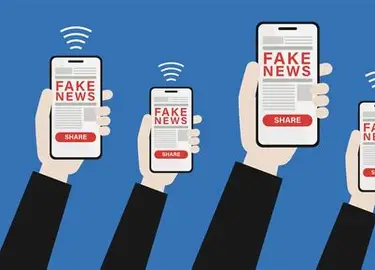Herein this article, we discussed how to verify new and spot misinformation during elections, pause before sharing, check the source, cross-verify with trusted fact-checkers, use reverse image search, watch for deepfakes and AI-generated contend look for context and full quotes, look for context and full quotes, follow official sources, educate others.
In the age of social media and 24/7 news cycles, elections can become a breeding ground for misinformation. False claims, doctored images, and out-of-context videos can quickly go viral, influencing public opinion and undermining democracy. Whether you’re a first-time voter or a seasoned political observer, knowing how to verify information is essential during election season.
- Pause Before Sharing
Emotions run high during elections, and misinformation often plays on our fears, hopes, or anger. Before hitting “share,” take a moment to ask:
. Does this sound too outrageous or too good to be true?
. Who is the source?
. Is this from a verified or trustworthy outlet?
Even a few seconds of reflection can prevent the spread of false information.
- Check the Source
Always consider where the information is coming from. Reputable news outlets have editorial standards and fact-checking processes. Be wary of:
. Anonymous or unclear sources
. Websites with strange URLs (e.g., lo, .co instead of .com or .org)
. Sensational headlines with little substance
Tip: Use tools like Media Bias/Fact Check or News Guard to assess the credibility of a source.
- Cross-Verify with Trusted Fact-Checkers
Several independent organizations specialize in debunking misinformation, especially during elections. If you’re unsure about a claim, search for it on:
. PolitiFact
. FactCheck.org
. Snopes
. Reuters Fact Check
They often investigate viral posts, quotes, and images within hours of them spreading.
- Use Reverse Image Search
Images and videos are powerful — and often manipulated. Use reverse image tools to see where a photo originally appeared:
. Google Reverse Image Search
. Tin Eye
. InVID (for video verification)
These tools can help identify whether an image has been taken out of context or altered.
- Cross-Verify with Trusted Fact-Checkers
AI tools can now create hyper-realistic audio and video impersonations. Signs of a deepfake or synthetic media include:
. Unnatural facial movements or lip-syncing issues
. Background artifacts or distortions
. Audio glitches or robotic-sounding voices
When in doubt, check with trusted news outlets or digital forensic experts.
- Look for Context and Full Quotes
A quote or video clip without context can be misleading. If you see a controversial statement or action:
. Look for the full video or transcript
. Check how other sources are reporting it
. Ask: What happened before or after this moment?
Manipulated context is one of the most common misinformation tactics during campaigns.
- Follow Official Sources
Candidates, election commissions, and legitimate news organizations often have official social media accounts or websites. Bookmark or follow these to stay updated on:
. Voting deadlines and procedures
. Candidate platforms and debates
. Election results
Avoid relying on random forwarded messages or anonymous posts for important information.
- Educate Others
If you spot misinformation, don’t just scroll past. Help others by:
. Sharing verified corrections
. Politely pointing out falsehoods
. Reporting fake content on platforms like Facebook, Twitter (X), and Instagram
Fighting misinformation is a collective effort — your voice matters.
Elections are the heartbeat of democracy, and informed voters are its lifeblood. In a world of instant sharing and information overload, it’s more important than ever to think critically, verify carefully, and share responsibly.
By being vigilant and using the tools available, you can help protect the integrity of elections — and encourage others to do the same.


